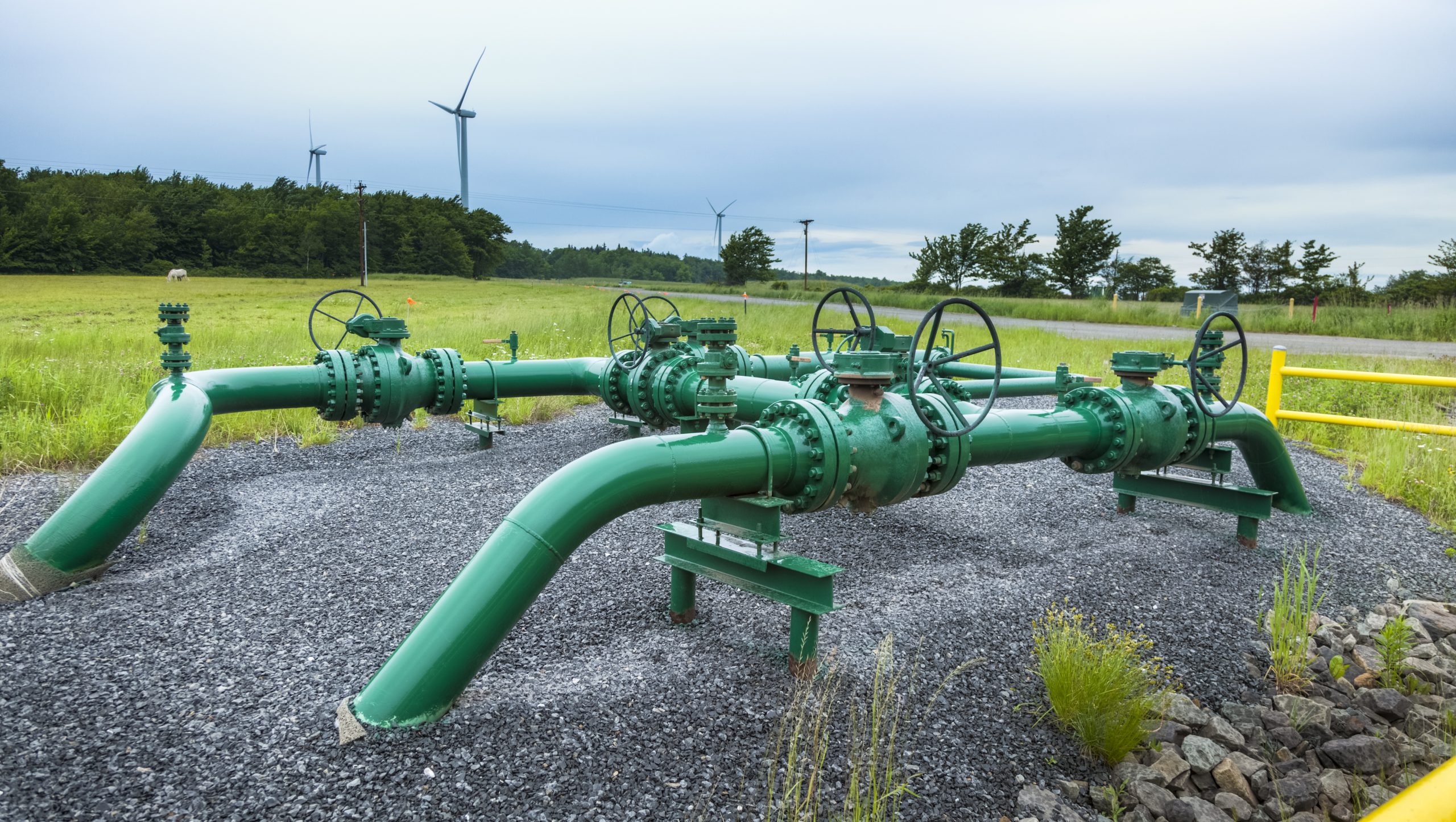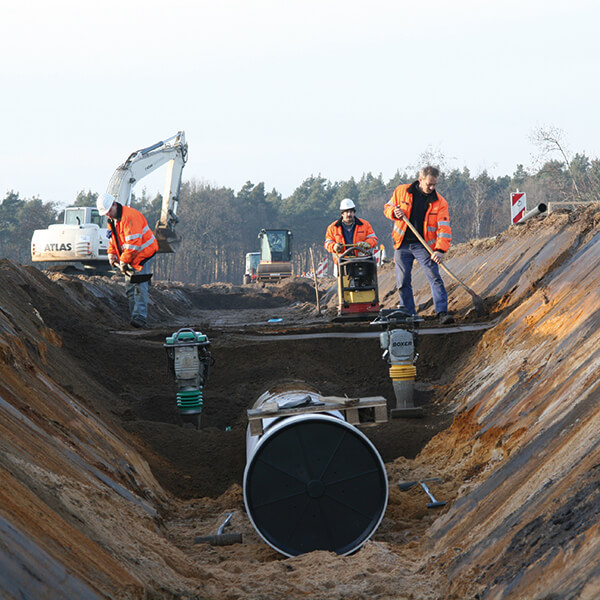How Pipeline Construction Services Use Technology to Improve Efficiency
Wiki Article
Discovering the Most Current Technologies in Pipeline Construction Solutions for Modern Projects
The Pipeline Construction market is undergoing considerable modifications. Advancements such as wise materials and robotics are reshaping conventional practices. These innovations assure to boost effectiveness and security. Additionally, AI technologies are enhancing project monitoring abilities. As these elements converge, they question about their long-term influence on sustainability and cost. Recognizing these technologies is important for stakeholders seeking to browse this developing landscape. What implications do they hold for future projects?The Increase of Smart Products in Pipeline Construction
As the demand for a lot more sustainable and effective Pipeline systems boosts, the combination of clever materials has actually emerged as a transformative service in Pipeline Construction. These advanced products have special buildings that boost the performance and longevity of pipelines. Self-healing polymers can automatically fix small leaks, considerably lowering maintenance expenses and downtime. In addition, materials embedded with sensing units can keep an eye on architectural integrity and environmental problems, permitting for real-time data collection and analysis.Smart products are frequently light-weight and corrosion-resistant, which not only simplifies installment yet additionally expands the life-span of the systems. Their flexibility enables pipes to withstand extreme environmental conditions, promoting safety and dependability. As sectors significantly focus on sustainability, using environment-friendly clever products adds to lowered ecological influence. Generally, the surge of clever products marks a noteworthy shift in Pipeline Construction, paving the means for innovative services to meet contemporary infrastructure needs.
Developments in Robotics for Setup and Upkeep
The assimilation of wise materials in Pipeline Construction is complemented by innovations in robotics, which are revolutionizing installation and upkeep procedures. Robotic technologies, such as automated welding systems and drones, enhance efficiency and precision, decreasing human error and minimizing safety and security dangers. These robots can operate in tough settings, making sure that setups are carried out in hazardous or remote locations without placing employees in jeopardy.Moreover, robot assessment tools equipped with innovative sensors offer real-time data on Pipeline honesty, permitting proactive upkeep. They can find leakages or structural weak points, allowing prompt interventions that expand the life expectancy of Pipeline systems. The use of robotics not just accelerates the Construction timeline but additionally maximizes resource allocation, resulting in set you back savings. As these modern technologies continue to develop, they are set to play a critical function fit the future of Pipeline Construction, making sure dependability and sustainability in framework growth.
AI-Driven Project Administration Tools Changing Operations
AI-driven project administration devices are reshaping process in Pipeline Construction by improving decision-making procedures through enhanced accessibility to real-time information analytics. These tools enable teams to react promptly to task advancements, thereby enhancing effectiveness. Structured communication channels foster partnership amongst stakeholders, additionally optimizing project outcomes.Enhanced Decision-Making Processes

Real-Time Data Analytics
Taking advantage of real-time information analytics, modern job administration devices transform workflow in Pipeline Construction. These sophisticated devices take advantage of expert system to offer immediate understandings into project performance, resource allowance, and prospective dangers. By continuously monitoring key performance indications, groups can promptly adjust to altering conditions, optimizing labor and materials use. The assimilation of real-time information permits even more informed decision-making, decreasing delays and decreasing prices. Furthermore, anticipating analytics can determine trends and projection obstacles prior to they escalate, boosting total project efficiency. Consequently, Pipeline Construction business that adopt these AI-driven devices can enhance job timelines and outcomes, guaranteeing they remain competitive in a progressively complex sector landscape. This advancement marks a significant change towards data-centric administration techniques.Structured Communication Networks
Efficient communication is vital in Pipeline Construction, where countless stakeholders should work together seamlessly to assure job success. The intro of AI-driven job management devices has actually reinvented communication networks within the market. These devices assist in real-time information sharing, permitting teams to accessibility updates, share files, and track progression efficiently. By automating regular tasks and supplying a central platform for interaction, these advancements remove misunderstandings and lower delays. Boosted visibility into task timelines and resource allowance fosters responsibility amongst employee. Furthermore, AI analytics can recognize possible communication spaces, making sure aggressive problem-solving. Ultimately, streamlined interaction channels not only enhance operations but likewise boost total task performance, enabling Pipeline Construction firms to satisfy modern-day needs properly.Enhanced Security Procedures Via Modern Technology Assimilation
The integration of innovation in Pipeline Construction has actually led to enhanced safety procedures. Real-time monitoring systems, wearable safety and security devices, and automated risk assessments are now essential components in reducing risks on work websites. These innovations not just description enhance worker safety and security however also streamline compliance with market policies.Real-Time Tracking Systems
How can real-time surveillance systems change Pipeline Construction safety and security procedures? By integrating innovative technology, these systems provide continuous surveillance of Construction tasks, ensuring prompt discovery of prospective hazards. Video cameras and sensors can check ecological problems, devices performance, and labor force activities, providing critical information in real time. This positive technique permits project supervisors to determine threats before they escalate, greatly improving safety procedures on-site. In addition, real-time tracking helps with compliance with regulatory requirements, ensuring that security standards are met continually. The capability to assess data instantaneously sustains educated decision-making, enabling timely treatments. Therefore, Pipeline Construction tasks can operate a lot more efficiently while safeguarding the health of employees and decreasing mishaps, thereby revolutionizing the sector's security landscape.Wearable Safety And Security Gadgets
Often, wearable safety devices are being integrated right into Pipeline Construction to boost safety procedures. These cutting-edge tools, including wise headgears, vests, and wristbands, are developed to monitor employee wellness and environmental conditions in real-time. Outfitted with sensors, these devices can discover threats such as harmful gas exposure, too much warmth, or high noise levels, supplying prompt notifies to supervisors and workers. Additionally, wearable technology frequently includes GPS tracking functions, permitting for efficient location monitoring of personnel on-site. This ability not only aids in quick response during emergency situations however likewise improves general task monitoring. By focusing on employee security via technology integration, Pipeline Construction firms are making significant strides in reducing crashes and advertising a culture of safety within the sector.
Automated Threat Assessments
While standard threat assessments often rely on manual evaluations, the combination of automatic danger analysis technologies is transforming safety protocols in like it Pipeline Construction. These sophisticated systems utilize information analytics, expert system, and maker understanding to identify prospective dangers much more properly and efficiently. By constantly keeping track of environmental problems, tools status, and employee habits, automated analyses give real-time insights that improve decision-making. This aggressive strategy minimizes the chance of crashes and boosts conformity with security laws. Furthermore, automated threat evaluations can be updated instantly, making certain that all stakeholders have accessibility to the most up to date details. Because of this, Pipeline Construction tasks profit from a safer workplace, minimizing disruptions and cultivating a society of safety via modern technology combination.Sustainable Practices in Pipeline Construction
As the demand for power framework rises, the Pipeline Construction market significantly focuses on sustainable practices that decrease ecological influence. Firms are taking on green materials and innovative Construction strategies to reduce their carbon impact. The usage of trenchless modern technology permits for Pipeline installment with marginal disruption to the surrounding environment, maintaining natural environments and decreasing soil disintegration.
Maintaining Additionally, the application of renewable energy sources, such as solar or wind, to power Construction tasks is acquiring traction. This change not just decreases reliance on nonrenewable fuel sources yet additionally enhances the overall sustainability of Pipeline jobs. Efficient waste management techniques, consisting of recycling and recycling materials, are ending up being standard in the industry.
Real-Time Surveillance and Predictive Maintenance Solutions
The change towards lasting practices in Pipeline Construction has actually led the means for the combination of real-time monitoring and predictive upkeep remedies. These technologies utilize progressed information and sensing units analytics to continuously assess Pipeline integrity and operational effectiveness. By gathering data in genuine time, drivers can find anomalies such as leakages or stress drops before they escalate right into serious concerns. This proactive approach not only minimizes environmental threats yet also lowers downtime and upkeep expenses.Predictive maintenance utilizes formulas to anticipate possible failures based on historic information and present performance metrics. This enables timely interventions, optimizing upkeep schedules and source allowance. In general, real-time tracking and predictive upkeep options stand for a substantial innovation in Pipeline Construction, improving safety and reliability while supporting sustainability goals. As sectors continue to embrace these innovations, the operational landscape of Pipeline monitoring is set to advance considerably, ensuring long-lasting feasibility and effectiveness.
The Role of Drones in Checking and Assessment
Drones have emerged as transformative tools in the surveying and inspection of pipelines, offering enhanced effectiveness and accuracy. Their capability to catch high-resolution pictures and video clips from numerous angles enables complete analyses of Pipeline integrity without running the risk of human safety and security. Furnished with sophisticated sensing units and thermal imaging capacities, drones can discover leaks, deterioration, and structural anomalies that may not show up to the naked eye.The implementation of drones significantly reduces evaluation time, enabling quicker decision-making for maintenance and repairs. This effectiveness translates to cost savings and marginal disturbance to bordering environments. Drones can also access hard-to-reach areas, such as sturdy terrains or elevated structures, further increasing the extent of inspections.
As the Pipeline market remains to accept technical developments, the combination of drones into checking and assessment processes is expected to expand, setting brand-new requirements for functional quality and safety in Pipeline Construction solutions.
Regularly Asked Concerns
What Are the Costs Connected With Modern Pipeline Construction Innovations?
The costs connected with modern Pipeline Construction innovations often include sophisticated products, specialized labor, and sophisticated modern technology. These aspects add to higher first investment, however can lead to long-lasting cost savings via boosted efficiency and lowered maintenance demands.Just How Do Governing Changes Effect Pipeline Construction Technologies?
Governing modifications substantially impact Pipeline Construction innovations by demanding the fostering of much safer, a lot more effective approaches. Conformity demands often drive development, resulting in developments in materials, layout, and Construction strategies that boost overall project sustainability and safety and security.What Abilities Are Needed for Jobs in Advanced Pipeline Construction?

Professions in advanced Pipeline Construction need knowledge in engineering concepts, project administration, security protocols, and environmental regulations. Furthermore, skills in modern technology integration, teamwork, and analytic are essential for passing through the complexities of modern facilities tasks.
Exactly How Can Firms Make Sure Compliance With Environmental Specifications?
To guarantee compliance with ecological standards, business need to apply strenuous training programs, conduct routine audits, and embrace best techniques in sustainability. Involving with stakeholders and keeping track of regulatory adjustments better reinforces their commitment to environmental stewardship.
What Are the Key Challenges Dealing With Pipeline Construction Today?
The vital obstacles dealing with Pipeline Construction today consist of regulative compliance, ecological worries, fluctuating product expenses, labor scarcities, and the requirement for innovative innovation assimilation (Pipeline Construction Services). These factors complicate task timelines and general performance in the industryAs the demand for much more reliable and sustainable Pipeline systems enhances, the integration of clever materials has look at this website emerged as a transformative option in Pipeline Construction. AI-driven project management devices are reshaping operations in Pipeline Construction by enhancing decision-making procedures with better accessibility to real-time information analytics. While project monitoring in Pipeline Construction has traditionally depended on manual procedures, the integration of innovative devices substantially enhances decision-making capacities. Harnessing real-time data analytics, modern-day job administration tools change operations in Pipeline Construction. Professions in advanced Pipeline Construction require knowledge in engineering principles, project monitoring, security procedures, and environmental laws.
Report this wiki page